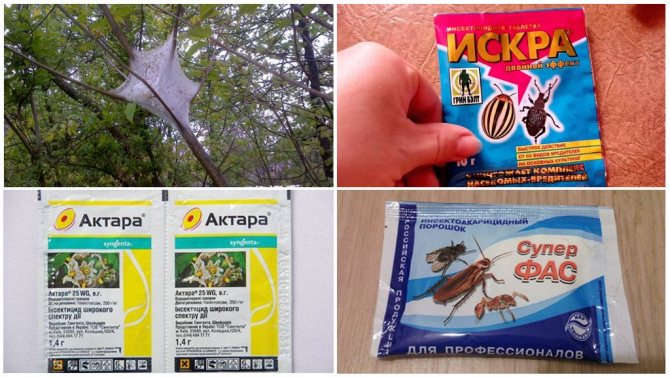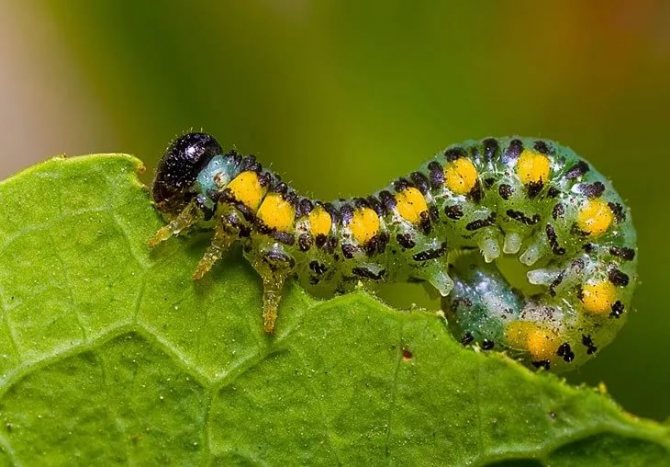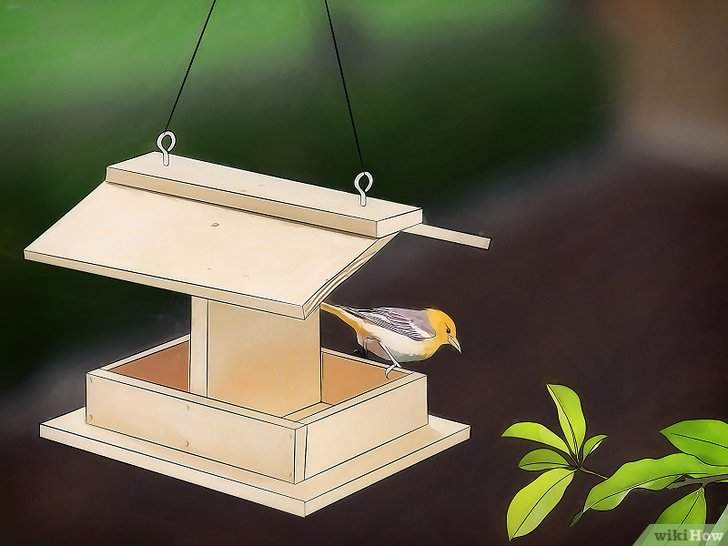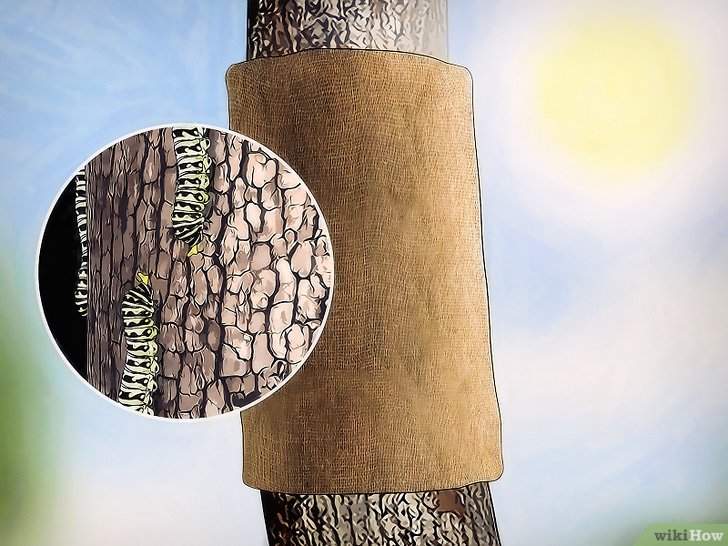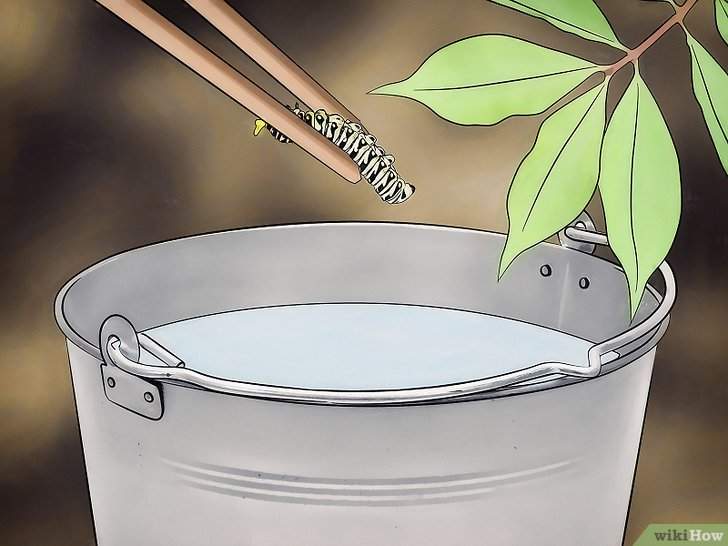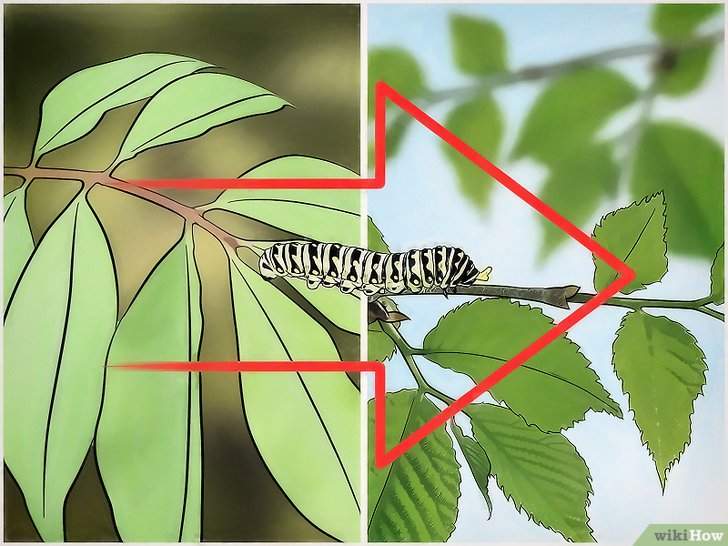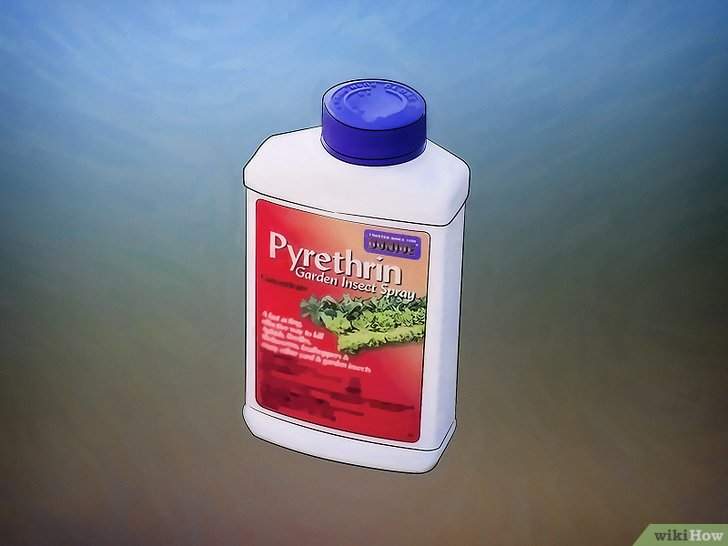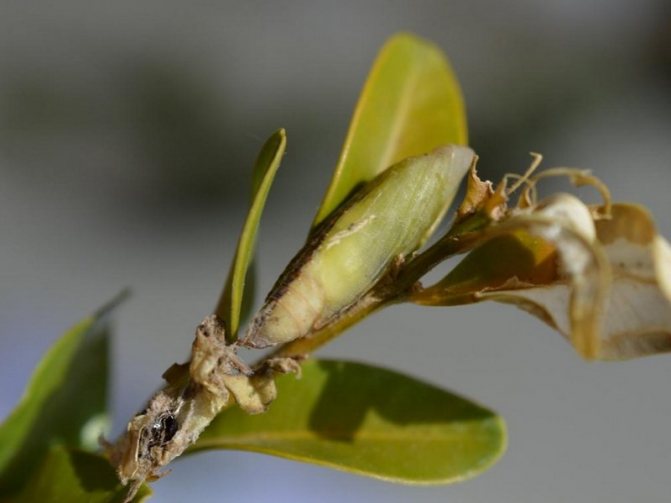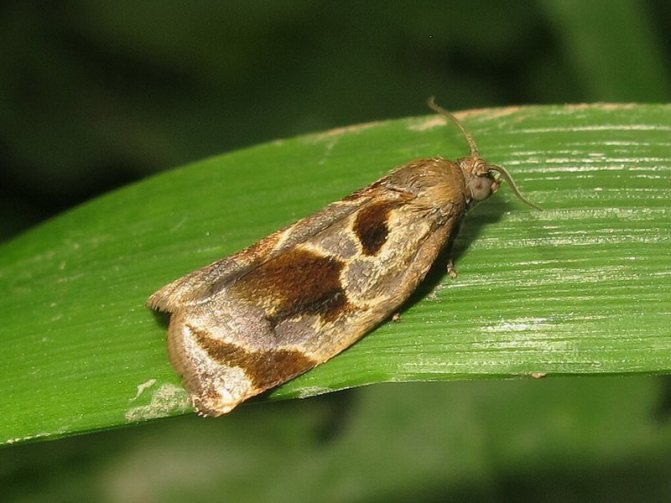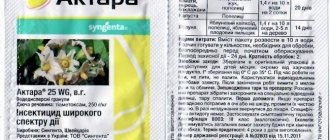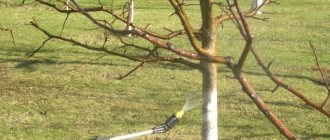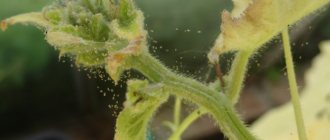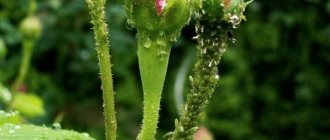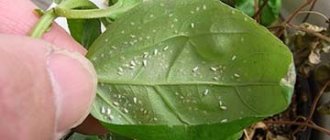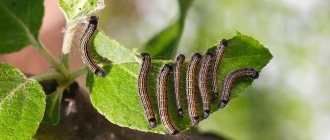Description
How to get rid of caterpillars? Caterpillars are insect larvae, from which butterflies, moths and moths subsequently emerge. They are capable of causing tremendous harm to fruit-bearing trees and vegetables located on the site. It takes a lot of effort to keep the garden and vegetable garden well-groomed. But no one is immune from the attack of parasites. Pests can appear suddenly, and they must be dealt with immediately to minimize damage. There are several ways to get rid of caterpillars, each of which has several benefits.
Common types of pests
Some types of insects are rare, while others, being pests, often attack plants. Basically, caterpillars create nests in trees on which they winter. In such clutches, from a hundred eggs to several thousand are placed. Then the caterpillars appear, which should be disposed of before the onset of spring.
Pests differ in size and color. The most common are:
- The leaf roll is perhaps the most common and dangerous species. Such caterpillars are very small, but this does not at all affect the fact that they are incredibly voracious. The leafworm feeds on all parts of the plant: leaves, buds, flowers, and even fruits. Caterpillars twist the leaves with a tube, settle inside, weave a web and feed there. Parasites multiply very quickly.
- The hawthorn is the most conspicuous species, since such caterpillars are furry. Their habitat is several leaves at once, which the parasites connect with cobwebs and lay eggs on them. The hawthorn appears more often on trees. Plants in the greenhouse (cabbage, tomatoes, peppers) do not suffer from it. Caterpillars are found at the base or cutting of a tree.
- The goldtail lives on the branches. Internodes, small branches and leaves are ideal places for weaving the webs of the golden-tailed. Thus, the parasites create shelter for themselves for the winter. When caterpillars are found, it is necessary to get rid of not only pests, but also the parts of the plant on which they lived.
- The unpaired silkworm, like the hawthorn, is hairy. He has about 500 eggs in a clutch. The parasites feed on the leaves, and after eating, only cuttings and veins are left. Thanks to the hairs, caterpillars fall from tree to tree - they are carried with gusts of wind. This is the main problem, because several plants suffer at once.
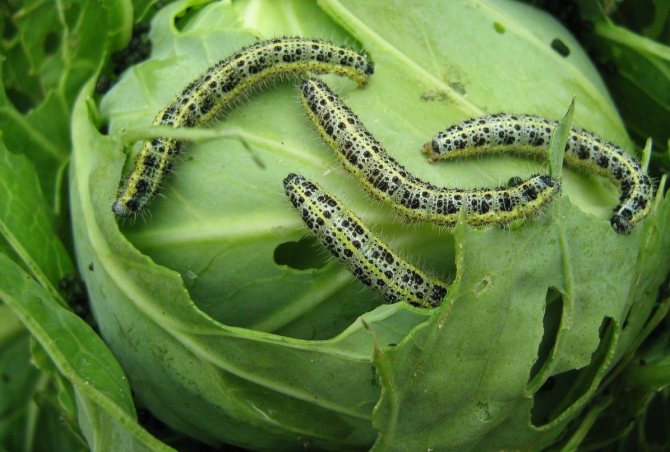
The rest of the species are also found, but not in large numbers. They are not as dangerous as the ones listed. One way or another, you need to deal with all species so that the plants in the garden and vegetable garden are healthy and bring harvest.
How to deal with leaf rollers on fruit trees
Before you deal with the leafworm on fruit trees, you need to exclude the presence of two especially dangerous varieties. These are multi-colored and moon-shaped leaf rollers. You can read their detailed description below. There is one distinctive principle of how to deal with this type of leaf roll: it is necessary to take protective measures during the period of swelling of the kidneys.


Fruit roll, multicolored Acleris variegana Den. et Schiff. - a butterfly with a wingspan of 18-24 mm. Caterpillar 16-18 mm long, gray-green, yellow-brown anal plate, black head and occipital plate.Caterpillars harm in April-May, feeding on buds and young leaves, which are often pulled together by cobwebs in a bunch.
Control measures the same as against the fruit leafworm.
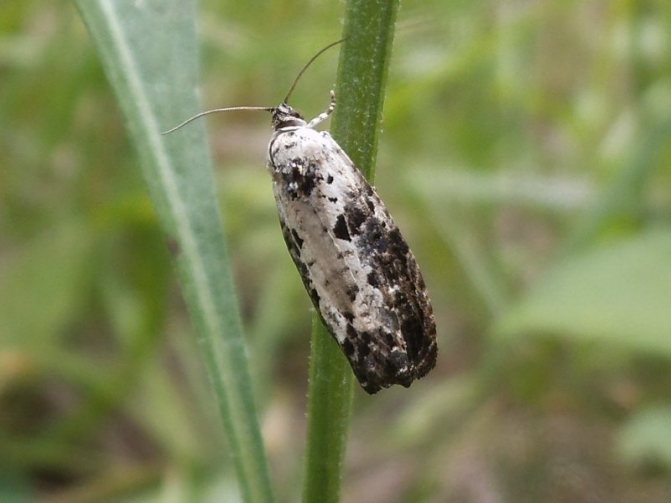

See the photo of this leafworm caterpillar for an illustration of its distinctive features.
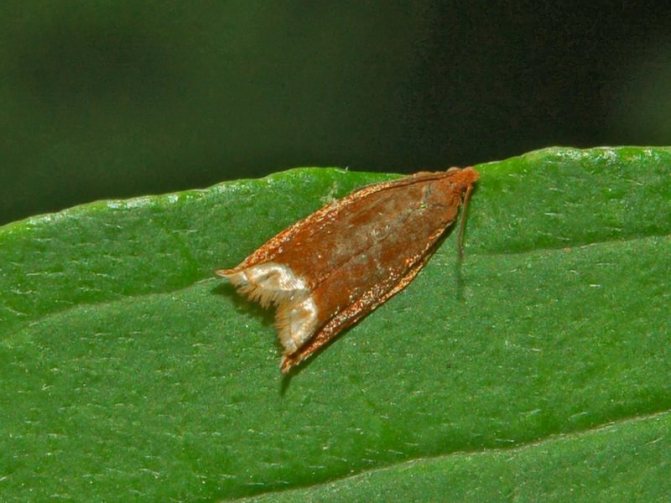

Lunate leafworm, or selenium leafworm Ancylis selenana Gn., Is the smallest of the leaf rollers, its wingspan is 10-12 mm. The forewings are brownish-brown with a yellowish-white oval spot along the outer edge, the hind wings are dark gray with yellow fringes.
How to deal with leaf rollers on trees in your garden depends on the degree of thickening of the crown. If the tree is in disrepair, the skeletal branches need to be thinned out. Young caterpillars are yellow-green, with translucent intestines. At an older age, the color of the caterpillars is lemon yellow, there are warts with light hairs on the body, the body length is 9-10 mm. The head and anal scutellum are light brown, the thoracic scutellum is pale with dark spots, the legs are yellow.
Pupa pale yellow, 6-7 mm long, with 8 yellow hooks at the end of the abdomen. Older caterpillars overwinter in fallen leaves, in early spring they pupate in the leaves or in cracks in the bark, and after 9-12 days butterflies fly out. Mass flight is observed in May. Females lay eggs on the upper side of leaves one by one or 3-5 eggs, the fertility of each is up to 70 eggs. Hatching caterpillars skeletonize leaves, gnawing out areas of pulp.
Feeding continues for 18-20 days, after which the caterpillars pupate between the glued leaves that they used to feed on. Moths of the second generation begin to fly out in July; mass flight occurs at the end of July - beginning of August. The hatched caterpillars feed until late autumn, and with the onset of frost they fall into a state of diapause and hibernate between fallen leaves glued together by a cobweb.
Caterpillars of the second generation skeletonize the leaves and damage the fruit, gnawing deep pits in them, and glue the leaves to the fruit with a cobweb. Fruit rot develops in places of damage. The leafworm damages all fruit and many berry crops.
Control measures. Spraying all fruit trees and shrubs two weeks after the end of flowering of apple trees with the drug fufanon or its analogues (kemifos, karbofos, etc.). Collecting and burning fallen leaves in autumn or spring.
Getting rid of caterpillars with folk remedies
Folk remedies are a good way to get rid of caterpillars. They are quite effective, and, which is important, almost always everyone has the products necessary for the preparation of the drug. In the fight against pests will help:
Chamomile infusion
This is a simple but powerful tool. 1 kg of dried chamomile flowers is added to 10 liters of water, then boiled. After the product is infused for 12 hours, filtered. Then the concentrate is mixed with water in a ratio of 1: 3, respectively. Affected plants are sprayed with chamomile infusion. You can enhance the effect if you rub a piece of laundry soap into the liquid before use.


Red elderberry
For the decoction, the stems and leaves of the tree are used. Raw materials (200 grams) are crushed and filled with 10 liters of hot boiled water. The mixture is infused for a day, then it is filtered. After that, you can spray the tree.
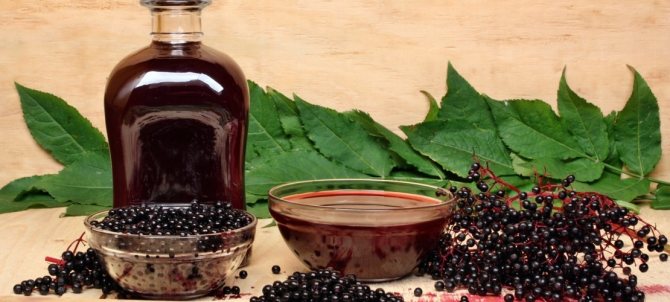

Black henbane
The broth is prepared from the branches and leaves of whitewash. The ingredients (2.5 kg) must be crushed, filled with a little water and sent to the stove. Boil for 30 minutes, then turn off the heat and add water to make 10 liters of the mixture. Insist for 12 hours, add grated laundry soap and spray the tree with pests.


Red pepper
A hot pepper decoction will help get rid of the caterpillars. You need to take 1 kg of vegetables and cut each product into two parts. Next, you need to pour the raw material with 10 liters of cold water and boil everything for an hour.After insisting for a day. The mixture is stored in the refrigerator, and the tree is sprayed with a non-concentrated liquid. In 10 liters of water, 12 g of broth on pepper is diluted. The plant is processed with this composition.


Vinegar solution
You don't need to boil anything. Dissolve 200 g of vinegar in 10 liters of water, mix thoroughly and treat plants affected by pests. This method works best for flowers.
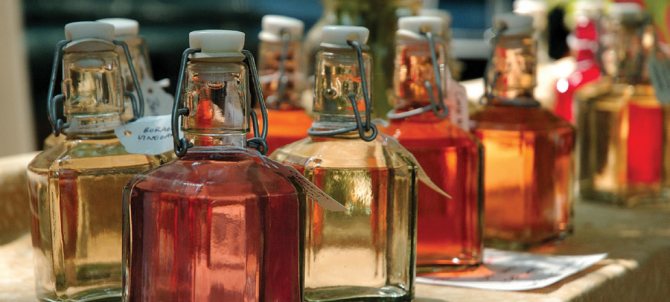

Wormwood
On the basis of this plant, you can prepare both a tincture and a decoction. Both products will become reliable helpers against parasitic caterpillars. The infusion is made easier. It is necessary to collect the blooming wormwood, grind it and send it to the bucket, filling the vessel exactly one third. All are poured with cold water and insisted for three days. After the specified time, the infusion should be filtered and then sprayed on the trees. In the case of the broth, everything is like this: the bucket is half filled with blooming wormwood, filled to the top with water, infused for a day, filtered. The resulting liquid must be boiled for 30 minutes. The composition is diluted with clean water in a ratio of 1: 2, respectively. Plants should be sprayed with this mixture.
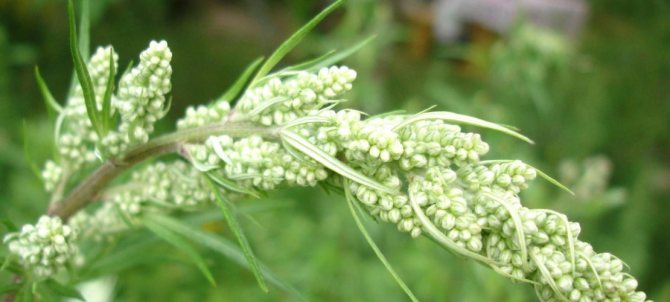

Onion peel
Infusion on onion husks is the best remedy for cabbage caterpillars. A liter glass jar must be filled with husks, then transfer the ingredient to another vessel and pour two liters of water. The composition should be insisted for a day or two. Then add enough water to make a total of 4 liters of the product. Finally, you need to strain, add grated laundry soap (25 g) and spray the plant.
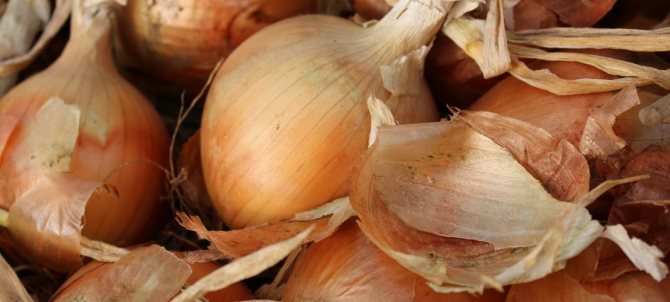

Burdock leaves
Burdock leaves must first be chopped. Then they are transferred to a bucket to fill half of the vessel, and are filled with water to the top. Everything is infused for 2-3 days. The mixture is filtered, and then you can proceed to spraying the affected tree. To enhance the effect, you can add laundry soap (25 g).
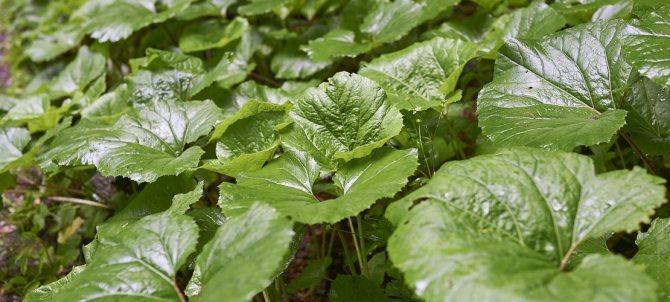

Tomato / potato tops
Potato or tomato tops are a simple and reliable remedy in the fight against caterpillars. The ingredients are crushed and then placed in a bucket to make it half full. Then the vessel is completely filled with water, everything is transferred to another container and boiled for one hour. After that, the composition must be filtered, diluted with clean water in a ratio of 1: 5, respectively. Then it is already possible to spray crops that have been attacked by caterpillars.
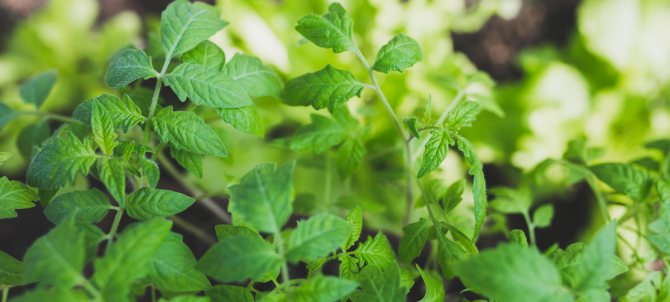

Tobacco + liquid soap
With the help of infusion of tobacco and liquid soap, caterpillars can also be eliminated. To do this, dissolve 100 g of tobacco in 1 liter of water and insist throughout the day. After that, the composition must be filtered and liquid soap (20 g) added. Mix everything and proceed to spraying the plants.


Highlander pepper
For cooking, you need 1 kg of stems of a flowering plant. First of all, they must be crushed, then pour 10 liters of boiled water and insist throughout the day, tightly covering the container with a lid. After the time has elapsed, the composition is filtered and is considered ready for spraying the tree.


Fumigation
To eliminate caterpillars in this way, it is necessary to put hot coals in a heat-resistant container and add resin and sulfur there in a ratio of 2: 1, respectively. After that, you should walk around the affected crops and fumigate parts that can be reached with smoke. It is very important that there is no wind outside during the procedure, otherwise everything is meaningless.
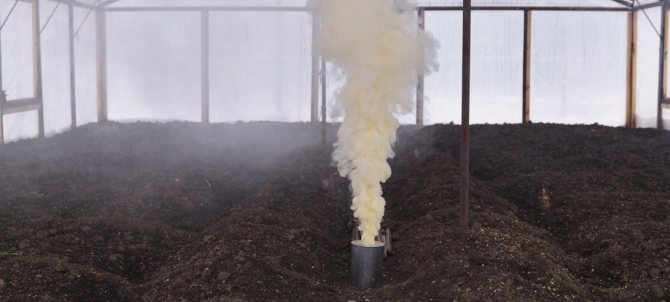

All folk remedies are good in their own way. It is possible to achieve the desired result and to end pests in such ways, while preparing the mixture is incredibly simple.
Biological method


Biological methods of dealing with caterpillars
When caterpillars appear on trees, a biological method can also be applied to destroy pests. It consists in attracting natural enemies.These are predatory insects (spiders or ticks) and birds (swifts, swallows, tits). To do this, in early spring, feeders, birdhouses, etc. are hung on trees. In the summer, it is impractical to install such devices.
A biological method of control is the use of bacteriological preparations (Bitoxibacillin or Lepidocide), which, when the larvae of a butterfly enter the body, cause their death.
Important!
The disadvantage of such funds is the need to spray trees multiple times. Moreover, the composition does not have a negative effect on beneficial insects, and therefore, it can be used for preventive purposes. In addition, this kind of funds are "active" at a temperature of at least 18 degrees.
Chemical fight
With the help of chemicals, you can also fight caterpillars. Purchased funds will bring the desired effect many times faster, but they should be used very carefully, strictly following the instructions on the package. Modern drugs very quickly defeat parasites, coping with large populations.
Chemicals are available in tablets, ampoules and powders. Usually, to treat a planted area of 50 square meters, one tablet, ampoule or pack of powder is enough, which are diluted in 7-12 liters of water. It is often not recommended to use the same agent in the fight against caterpillars, because parasites develop immunity to it. For effectiveness, drugs should be changed.
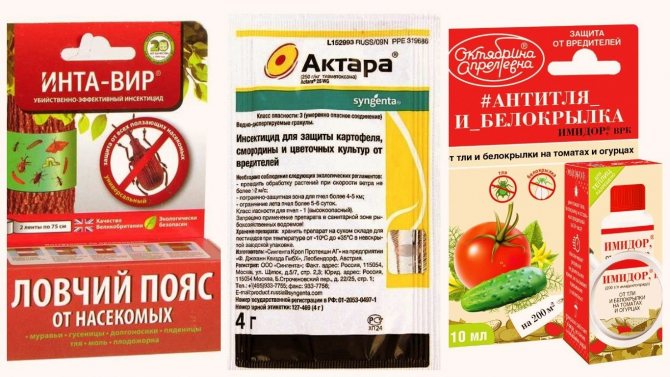

Chemicals have a limited life span. You can get rid of caterpillars with their help at least two weeks before the time of harvest. It is best to process crops one month before harvest. Otherwise, eating fruits (cabbage, potatoes, peppers, tomatoes, etc.) is prohibited, since insecticides are dangerous to the human body.
Chemicals can be of three types:
- contact (they protect only those parts of the crop that have been processed; they act quickly enough, but a significant disadvantage is that they are washed off by rain);
- intestinal (the point is that such agents enter the insect's body with food and destroy the parasite from the inside);
- systemic (affect pests in different ways).
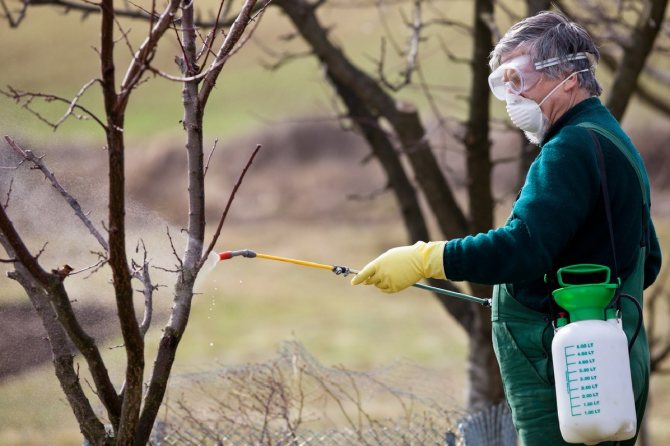

The most popular insecticides are:
- "Inta-Vir" is a broad-spectrum drug that is not recommended for use during the flowering of a plant, since it also destroys beneficial insects (as well as aquatic inhabitants).
- Iskra M is not recommended for use near water sources. From it, the effect will last for about two weeks.
- "Monsoon" is a broad-spectrum agent that will be equally effective at any time of the year, since it is resistant to temperature fluctuations. The effect of use lasts 15-30 days.
- Senpai acts in a contact manner and is dangerous for bees, so it should not be used during the flowering period. Trees and other crops will be safe for two weeks.
- "Lepidocide" - a drug based on bacteria. With its help, you can get rid of caterpillars both in the garden and in the garden. It should be applied at intervals of 7-8 days during the rainy season.
- "Bitoxibacillin" is also made on the basis of bacteria. It will eliminate parasites from fruit, flower, vegetable and ornamental crops. It is necessary to treat plants with the tool once every 7-8 days, especially in summer, since it is at this time that there are most parasites. Works for 2-3 weeks.
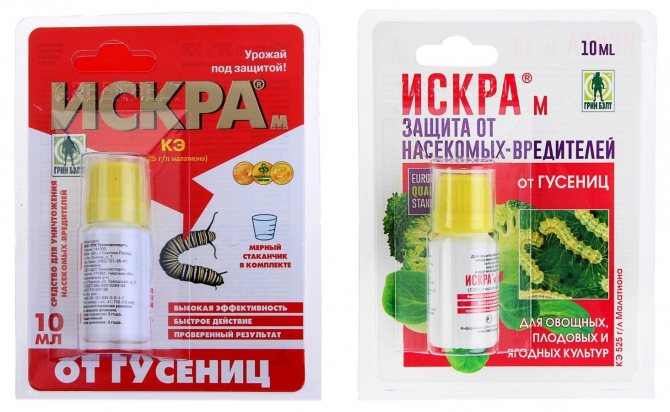

Also popular are "Aktara", "Fufanon", "Karate", "Taran", "Karbofos", "Rovikurt", "Fas", "Lightning". Chemicals will help eliminate the caterpillars, so the plants will be healthy and fertile.
Mechanical impact
Mechanical impact is the simplest available and safest method of control, which includes not only dropping pests from trees and collecting by hand, but also removing overwintered nests and egg-laying. Collecting caterpillars by hand must be carried out with protective gloves, as many larvae have bristles that protect them from enemies.
On a note!
It is also possible to influence the larvae of the butterfly by means of trapping belts, which are placed on the tree trunk to protect its crown. Traps in the form of jars, which are filled with fragrant bait liquids, are no less effective.
However, carrying out such manipulations will give a positive effect with a slight infestation of trees or other plantations with caterpillars. If there are already too many insects, the fight against caterpillars in the garden will not give the desired results. This method will not work for tall trees either.
Caterpillar prophylaxis
Caterpillars are pests that you can get rid of with the help of various means, but it is better to take preventive measures so that parasites do not appear at all.
It is imperative to carefully monitor the crops and regularly check them for the presence of caterpillar clutches. It is recommended to do this all season.
Do not leave debris and fallen leaves on the site. Every autumn it is imperative to rake the foliage and remove the debris left over from the crops. Thanks to this, the number of pests on the site can be significantly reduced. The foliage must be examined from both sides: from the inside and from the outside. If laid eggs are found, it is required to cut off or tear off the affected piece of the leaf, and then throw it into the trash. It is the foliage that should be given a lot of attention, examining each leaf.
Before you start planting a vegetable garden or garden, you need to inspect the already planted plants. If masonry is found on them, you should immediately begin to eliminate the parasites. Only then can you start planting.
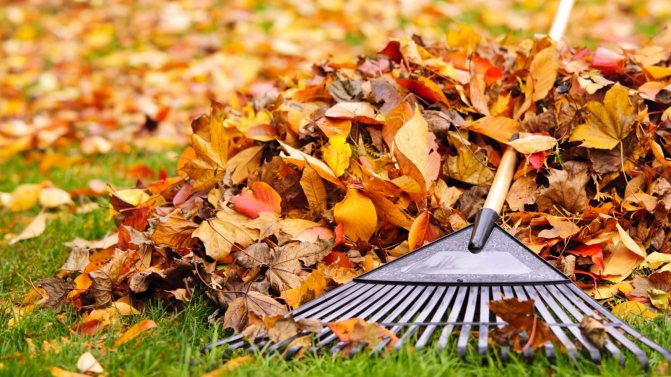

At first glance, caterpillars are not scary, but do not forget that they multiply quickly enough. In large quantities, these insects can cause significant damage: not only plants will suffer, but also their fruits, respectively, the yield will be smaller. Therefore, in case of detection, it is necessary to immediately begin to combat parasites. Fortunately, you can get rid of pests in various ways at home. Prevention must also be done so that there are no problems with gluttonous caterpillars at all.
Cabbage butterfly
Caterpillar of a cabbage butterfly (white cabbage) living on white cabbage. It feeds on leaves, which are then full of holes. Moreover, the larvae can move deep into the head of cabbage and firmly settle there.
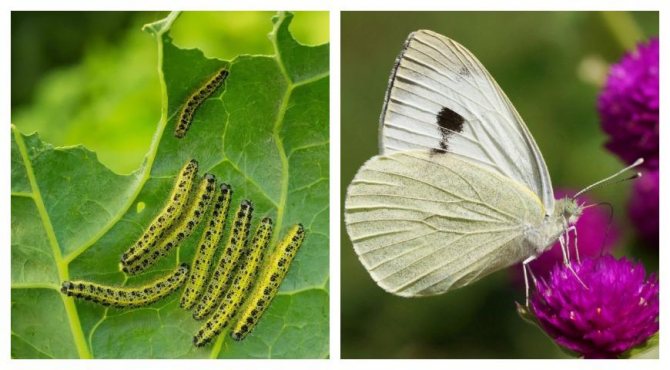

Measures to combat cabbage
You can try sprinkling cabbage with infusion of tomato tops and onion skins. Insecticides also help: "Aliot", "Gerold".
It is interesting! The most terrible natural enemy of cabbage caterpillars is the wasp wasp. She lays her eggs directly in the caterpillars. One female can lay up to 300 eggs in a caterpillar. Soon larvae hatch from the eggs, which feed on caterpillar juices, the caterpillar itself soon dies. Wasps can be attracted to cabbage by spilling it with sweet water, diluted jam or syrup.







